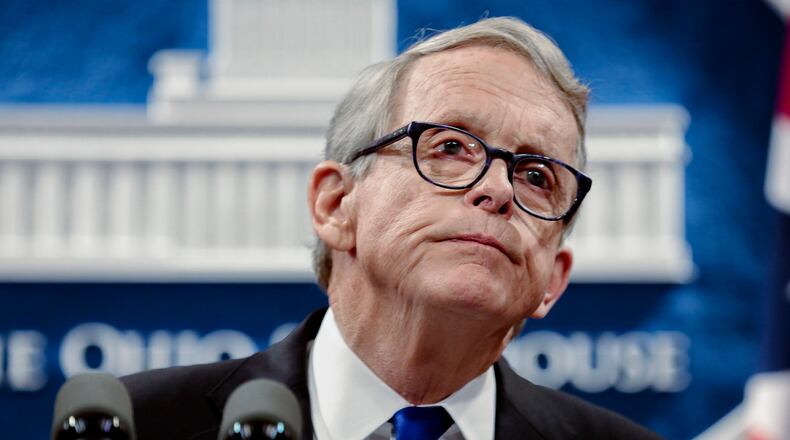“This is truly an investment in our future,” DeWine told reporters on Monday as he unveiled his two-year state budget proposal.
DeWine defended his $50 million plan to market Ohio as a good place to live and do business. “Ohio is a welcoming place. I don’t care who you are, we want you to come to Ohio. It’s a progressive state,” the governor said.
The $1 billion, one-time spending is possible, DeWine said, because Ohio made tough choices at the front end of the pandemic to cut costs, as well as the federal government picking up a larger share of Medicaid expenses.
It drew immediate praise from the Ohio Chamber of Commerce, Ohio NFIB and Ohio Municipal League.
The proposed state fiscal year 2022-2023 budget calls for spending a total of $171.57 billion. The state budget plan must be approved by the Ohio House and Senate by June 30. The fiscal year begins July 1.
Ohio Medicaid, a state and federally funded health care program for 2.9 million disabled and low-income Ohioans, is expected to cost $28.37 billion in fiscal year 2022 and $29.66 billion the following year, up from $27.3 billion in the current fiscal year.
DeWine said the budget does not raid the “rainy day fund,” which he plans to preserve in case the coronavirus pandemic takes another dire turn. The balance is currently $2.69 billion.
“We have to be prepared in case there is something that comes up that is unforeseen and we have to hunker down again. We don’t want to. We don’t intend to. But we can’t control this virus,” DeWine said.
DeWine’s fiscal year 2022-2023 budget plan builds on themes he established in his first budget two years ago:
- H2Ohio: He is asking lawmakers to put $240 million into H2Ohio, a program to ensure clean drinking water, reduce harmful algae blooms in Lake Erie and assist farmers in adopting best practices. The last budget included $180 million for the program.
- Public Health: The governor wants improvements made in public health data collection and management systems. “Public health has been underfunded in this country for generations. There is a lesson from this pandemic, I guess there is a lot of lessons, but one of the lessons certainly should be is we can no longer afford to do that, if we ever could. We have to start investing in public health and this budget does that.”
- K-12 Wellness: DeWine is proposing $500 million in fiscal year 2022 and $600 million the following year for school districts to spend on wellness programs for K-12 students, such as mental health counseling or nutrition services. The governor does not offer any school funding formula changes; instead, he said he’ll leave that to lawmakers to determine.
“The devil is always in the details,” said Ohio Education President President Scott DiMauro in a written statement. “Education spending must be a top priority in Ohio to ensure our students, educators and communities receive the resources they need to succeed. OEA will closely examine the full budget proposal as soon as possible and will continue advocating tirelessly for Ohio’s 1.7 million public school kids.”
DeWine said his two-year budget proposal has no tax increases but does include fee hikes, including a higher motor vehicle registration fee to support the Ohio State Highway Patrol. Roughly two-thirds of the Department of Public Safety budget comes from fees paid by 9 million drivers and 13 million vehicle owners.
Under DeWine’s budget plan, motor vehicle registration fees would be bumped up by $10 and title fees would be increased by $2. The fee increases are expected to raise an additional $127 million per year for the Department of Public Safety.
Ohio’s sales tax revenues have seen a “pandemic boost” as consumer spending shifts to durable goods, such as furniture, recreation equipment and home renovations, and away from services, said Kim Murnieks, director of the state Office of Budget and Management.
Separate budgets will be prepared for the Ohio Department of Transportation and the Bureau of Workers’ Compensation. And state lawmakers late last year adopted a $2.5 billion capital budget bill that proscribes how Ohio will pay for big ticket expenses.
While the state’s fiscal house is in better shape than was expected at the outset of the pandemic, Ohio has borrowed $1.3 billion from the federal government to keep unemployment checks flowing. Murnieks said interest on the loan isn’t accruing and when to apply interest is still being debated.
About the Author

